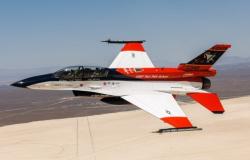NASA has developed an electric propulsion system for small spacecraft on future planetary exploration missions.
This technology, called the NASA-H71M subkilowatt Hall effect thruster, is already being prepared to be used for another purpose: extending the life of spacecraft already in orbit.
This emerging planetary class of small spacecraft will need to perform challenging propulsion maneuvers, such as achieving planetary escape velocities, orbit capture, and more, requiring a velocity change (delta-v) capability far in excess of typical commercial needs and the current technological availability.
Therefore, the number one enabling technology for these missions is an electric propulsion system that can execute these high delta-v maneuvers. The propulsion system must operate at low power (subkilowatts) and have high propellant efficiency (i.e., the ability to use a large total mass of propellant over its lifetime) to enable the thrust necessary to execute these maneuvers.
The new technology has been the result of years of research and development at NASA’s Glenn Research Center (GRC).
According to the space agency, the commercialization of this new booster “will soon provide at least one solution that will enable the next generation of small spacecraft scientific missions that will require up to 8 km/s of delta-v.” This technical feat was achieved by miniaturizing many advanced high-power solar electric propulsion technologies developed over the past decade for applications such as the power and propulsion element of Gateway, the first space station around the Moon.
Small spacecraft using NASA-H71M electric propulsion technology will be able to independently maneuver from low Earth orbit (LEO) to the Moon or even from a geosynchronous transfer orbit (GTO) to Mars. This capability is especially notable because commercial launch opportunities to LEO and GTO have become routine, and excess launch capacity from such missions is often sold cheaply to deploy secondary spacecraft. The ability to conduct missions originating in these near-Earth orbits can greatly increase the cadence and reduce the cost of scientific missions to the Moon and Mars.
This propulsion capability will also increase the range of secondary spacecraft, which have historically been limited to scientific targets that align with the primary mission’s launch trajectory. This new technology will allow secondary missions to substantially deviate from the primary mission trajectory, facilitating the exploration of a broader range of scientific objectives.
Additionally, these secondary spacecraft scientific missions would typically have only a short period of time to collect data during a high-speed flyby of a distant body. This increased propulsion capability will enable deceleration and orbital insertion into planetoids for long-term scientific studies.
Additionally, small spacecraft equipped with such significant thrust capability will be better equipped to manage late-stage changes to the primary mission’s launch trajectory. These changes are often a significant risk for small spacecraft scientific missions with limited onboard thruster capacity that depends on the initial launch trajectory to achieve their scientific objective.
The megaconstellations of small spacecraft currently forming in low Earth orbits have made low-power Hall effect thrusters the most abundant electric propulsion system used in space today. These systems use propellant very efficiently, allowing for orbit insertion, deorbit, and many years of collision avoidance and reprogramming. However, the economical design of these commercial electric propulsion systems has inevitably limited their lifespan to less than a few thousand hours of operation and these systems can only process about 10% or less of the initial mass of a small spacecraft. in propellant.
By contrast, planetary science missions benefiting from NASA-H71M electric propulsion system technology could operate for 15,000 hours and process more than 30% of the small spacecraft’s initial mass into propellant. This innovative capability goes far beyond the needs of most commercial LEO missions and comes at a cost premium that makes commercialization of such applications unlikely.
One commercial partner that will soon use NASA-licensed electric propulsion technology in a commercial application for small spacecraft is SpaceLogistics, a subsidiary of Northrop Grumman. The Mission Extension Pod (MEP) satellite service vehicle is equipped with a pair of Northrop Grumman NGHT-1X Hall-effect thrusters, the design of which is based on the NASA-H71M.






